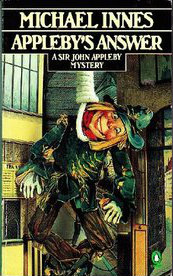Not Quite Dead Enough by Rex Stout
Review by Matt B. (BuffaloSavage)
During WWII Stout devoted most of his time to war work, writing for the government. But he did write some Nero Wolfe shorties. This contains a pair of novellas that first came out in The American Magazine (1906 – 1956), “Not Quite Dead Enough” in December, 1942 and “Booby Trap” in August, 1944.
Stout makes them topical, given the nation is at war against fascism, so Wolfe’s sidekick, Archie Goodwin, serves in the Army. Like Conan Doyle coyly hinted things in the Holmes stories, Stout is adept at throwing out tantalizing hints as to what Archie is doing to serve. A counter-intelligence officer, perhaps?
The WWII backdrop is unique in the canon. Archie is driven to set himself up for arrest in order to snap Wolfe out of a patriotic frenzy. The wartime fever has driven the agoraphobic and gastronomic Wolfe to actually go outside and do some brisk walking. Well, as brisk as the rotund Wolfe (and the poor cook Fritz) can manage. This will delight long-terms fans of the series, believe me.
The book has plenty of funny characters. The reveal and the ending, too, depart from the norm in that the climax occurs not with all suspects gathered in the office, but with only Archie in attendance, with Wolfe proposing and disposing. Hey, whaddaya want, there’s a war on!
I highly recommend this one to both Wolfe fans and novices




